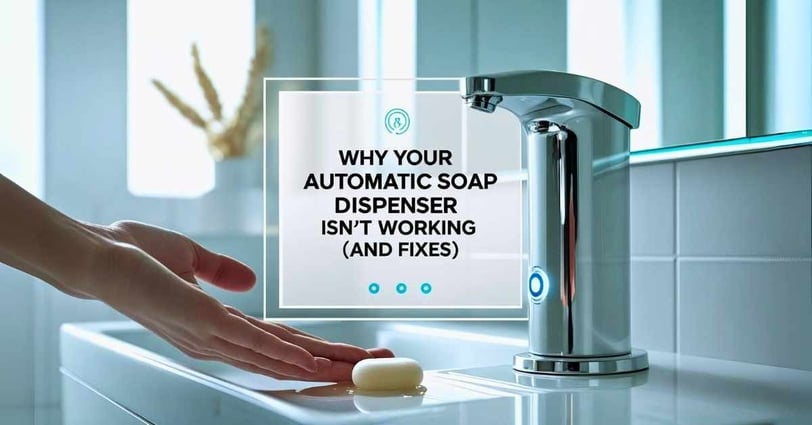Why Your Automatic Soap Dispenser Isn’t Working (and Fixes)


Last month, Maya noticed her sleek, motion-activated dispenser was no longer responding. She waved. She tapped. She even unscrewed the soap cap in frustration. Nothing. For someone juggling two kids, a remote job, and a germ-free household, it felt like the smallest gadget had become the biggest headache. But instead of tossing it out, she dug into the manual, did a little research, and with a fresh set of batteries and a nozzle wipe, the device was back in action.
If you’ve ever experienced a similar bathroom tech failure, you’re not alone. Let’s walk through the most common reasons this happens—and how to fix it in minutes.
🧼 Common Reasons It Stops Working
If your current model is beyond saving, explore affordable alternatives:
Brands like Secura, Simplehuman, and Umbra Otto offer under-$50 models
Look for waterproof rating (IPX4 or higher) and soap type compatibility
Also compare Battery-Powered vs Rechargeable Soap Dispensers to see which fits your lifestyle better.
🛒 Budget-Friendly Replacements
Sometimes it’s better to cut your losses:
Corroded battery terminals that no longer hold power
Sensors that don’t respond after multiple resets and cleanings
Cracks, leaks, or motor noise even when new batteries are used
If you’re ready for a new option, check out our roundup of Best Smart Accessories to Refresh Your Bathroom in Summer.
⚠ When to Replace It
Clean Weekly: Especially around the nozzle and sensor
Refill Carefully: Avoid overfilling or using soap not suited for your model
Protect Electronics: Keep away from direct splash zones (like sinks or tubs)
Elevate or Mount Properly: Ensure good positioning to avoid false triggers
🧱 Maintenance Tips to Prevent Future Issues
Change the Batteries
Use name-brand batteries and clean any corrosion with a Q-tip dipped in vinegar
Clean the Sensor
Wipe gently with a soft microfiber cloth and mild soap solution
Avoid spraying liquid directly on the sensor area
Use the Right Soap
Stick to liquid soap unless your unit is foaming-compatible
Dilute slightly with water if the soap is very thick
Flush or Refill the Reservoir
Empty it out, rinse with warm water, and refill correctly
Reset the Unit
Many dispensers have a reset button or reset function via holding the power for 5 seconds
Unclog the Nozzle
Run warm water over the nozzle or gently poke it with a soft brush or paperclip
🛠️ Fast Fixes That Actually Work
1. Battery Problems
Dead or corroded batteries are the top culprits
Cheap batteries may leak or not provide consistent power
2. Sensor Obstruction or Dirt
Water splashes, soap residue, or dust can block the motion sensor
3. Soap Issues
Using foaming soap in a liquid-only dispenser causes clogs
Extra-thick soap may strain the motor
4. Empty or Blocked Reservoir
Sounds obvious, but an empty tank or soap buildup near the nozzle can stop flow
5. Faulty Pump or Motor
Overuse or poor build can wear out the pump mechanism
6. Low-Quality Materials
Budget models may degrade faster or lack protective waterproofing
Statista reports that 34% of smart bathroom users encounter performance issues within the first year—often due to poor maintenance or soap compatibility.
Pleasure for us to Assist You Further...
Your device isn’t broken—it probably just needs a little attention. With basic tools, a soft cloth, and a few simple steps, you can revive your bathroom gadget and save yourself from unnecessary waste or frustration.
So, what fix will you try first?
📆 Conclusion
This guide is especially helpful for:
Smart Bathroom Users tired of mystery malfunctions
DIY Homeowners looking for easy, fast solutions
Parents & Seniors relying on contact-free hygiene
Anyone on a Budget who prefers fixing over replacing
It solves problems like unresponsive dispensers, confusion over soap types, and health concerns when the device fails at the worst time.
